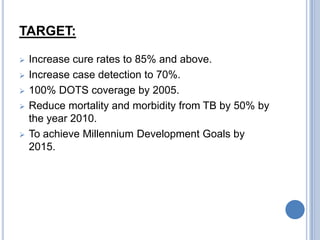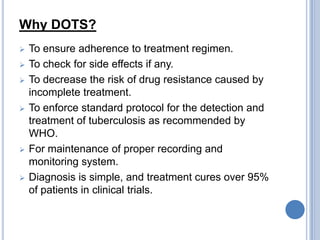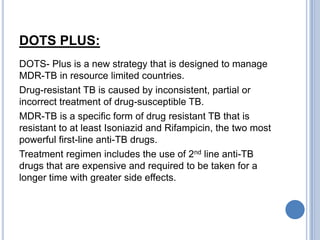DOTS is the WHO-recommended strategy for tuberculosis detection and treatment. It involves identifying infectious TB patients through microscopy, observing patients swallowing anti-TB drugs daily for 6-8 months, and regularly monitoring patients' progress. DOTS was launched in Pakistan in 1995 but faced challenges until being expanded nationwide by 2005. While cure rates and coverage increased under DOTS, Pakistan still faces ongoing issues with drug-resistant TB, capacity, and monitoring systems. The updated Stop TB Strategy aims to further improve TB control globally through universal access to diagnosis and treatment.
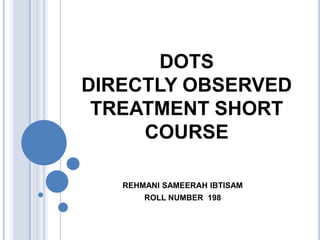
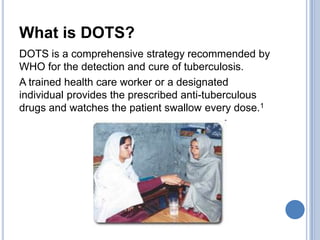

![HISTORY OF DOTS:
During World War II : Styblo at 24 years of age, contracts
tuberculosis at a concentration camp.
1980: Styblo defines IUATLD model to control TB in
Tanzania2
1990: World Bank asks Styblo to create Pilot project for
China
1993: WHO declares TB as a global emergency
1994: New TB control framework [Dr Arata Kochi]
1995: DOTS launched as a WHO strategy](https://image.slidesharecdn.com/dots-130511131624-phpapp02/85/Dots-4-320.jpg)
![Dr. Karel Styblo [1921-1998]3](https://image.slidesharecdn.com/dots-130511131624-phpapp02/85/Dots-5-320.jpg)







